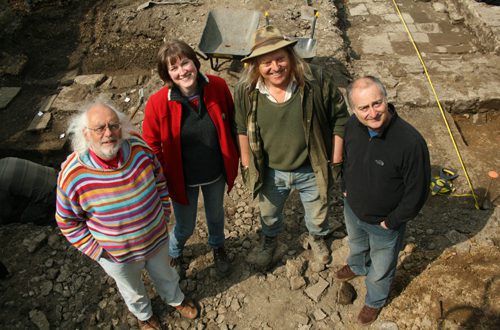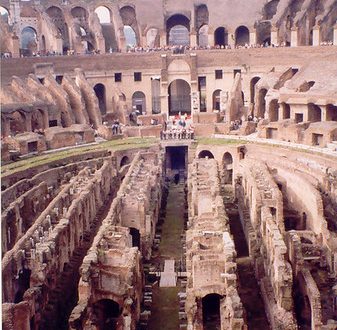Scientists from the University of Padua have, for the first time, been able to decipher the streets and buildings of a lost Roman town called Altinum, just north of Venice. They did this by flying over the site near the modern-day village of Altino, which is today no more than a few cornfields to the naked eye. They then took aerial photos with cameras using near-infrared and other light wavelengths. The result is an image of the Altinum that lies half a metre or more below ground level, and clearly shows streets, a basilica, an amphitheatre and a canal. Historians believe the site is unique, in that it is the only Roman city in northern Italy not to have been built upon in subsequent centuries.
During the Roman era, Altinum was occupied by the Veneti tribe. As an important trading centre, it thrived and is thought to have been about the same size as Pompeii (which had about 20,000 inhabitants). In 452 AD, it was completely destroyed by the Huns. A century later, an invasion by the Lombards forced the Veneti to flee to the islands in the Venetian Lagoon (such as Torcello and Burano). This is believed to have been the founding of modern-day Venice, which also became a crossroads for traders. While Altinum was on the mainland, it was nevertheless on marshy terrain, which became built up, incorporating water systems (as the discovery of the canal suggests) to make it more habitable. It is generally considered to be forerunner of Venice.
The team from the University of Padua used their aerial images to analyse differences in plant colour and humidity in the soil, which varied according to the structures that lie beneath the topsoil. A strip of riper crops to the south of the ancient city centre showed the location of the canal. The study by Dr Andrea Ninfo and colleagues, of Padua University, is called The Map of Altinum, Ancestor of Venice.
Although the study was carried out in 2007, the results were published recently in Science magazine, which quotes Paolo Mozzi, a geomorphologist at the University of Padua in Italy, as saying: “Altinum is unique because it was not built upon in later times.”
The magazine also quotes Margherita Tirelli, inspector of the Archaeological Superintendence of Veneto and director of the National Archaeological Museum of Altinum, as saying: “Before what Professor Mozzi has done, it was impossible to imagine the complexity and distribution of the main buildings and structures of the municipium.”
This video on the BBC web site shows a ‘virtual flyover’ of Altinum.
Photos by: Science/AAAS and Andrea Ninfo, University of Padua.



